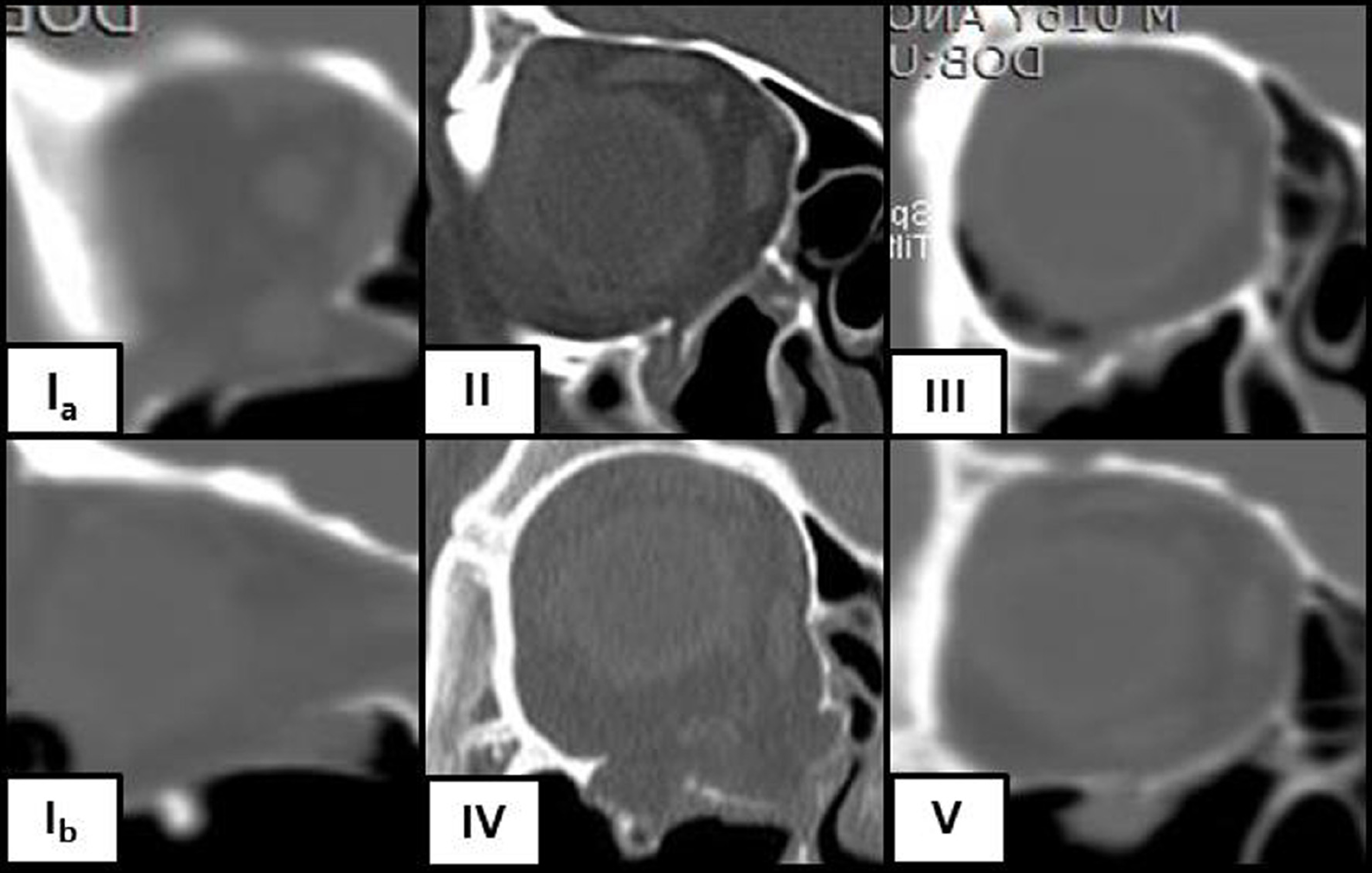J Korean Ophthalmol Soc.
2017 Apr;58(4):373-379. 10.3341/jkos.2017.58.4.373.
Infraorbital Nerve Hypesthesia after Inferior Orbital Wall Fracture and Reconstruction Surgery
- Affiliations
-
- 1Department of Ophthalmology, CHA Bundang Medical Center, CHA University, Seongnam, Korea. eye@cha.ac.kr
- 2CHA Medical Graduate School, Seongnam, Korea.
- KMID: 2376590
- DOI: http://doi.org/10.3341/jkos.2017.58.4.373
Abstract
- PURPOSE
To report the incidence of infraorbital nerve hypesthesia after inferior orbital wall fracture and reconstruction surgery and analyze the duration and factors to influence the occurence of the infraorbital nerve hypesthesia.
METHODS
From March, 2001 to March, 2016, the medical records of 171 patients with isolated orbital floor fracture reconstructed with porous polyethylene or titanium mesh was analyzed retrospectively. Injury mechanism, fracture type, time interval to surgery, fracture size, type and thickness of implant were analyzed. Orbit computed tomography scan was performed at preoperative and postoperative 6 weeks.
RESULTS
Mean age was 30.4 years (male:female = 130:41). The mean time interval to surgery was 9.5 days. Incidence of infraorbital hypesthesia was 9.9% preoperatively, 38% in a week of surgery, 13.5% in 6 weeks and 5.8% in 6 months. Infraorbital hypesthesia lasts 20.5 weeks and the length of infraorbital canal was the only risk factor of persistent infraorbital hypesthesia.
CONCLUSIONS
Postoperative infraorbital nerve hypesthesia presents in a week in most patients. It last about 20.5 weeks, then mostly recovers in 6 months. This study will be useful to predict the clinical course of the patients with infraorbital nerve hypesthesia. Therefore, full explanation about the facial sense change is necessary for the patients with inferior orbital wall fracture.
MeSH Terms
Figure
Reference
-
References
1. Renzi G, Carboni A, Perugini M. . Posttraumatic trigeminal nerve impairment: a prospective analysis of recovery patterns in a series of 103 consecutive facial fractures. J Oral Maxillofac Surg. 2004; 62:1341–6.
Article2. Gierloff M, Seeck NG, Springer I. . Orbital floor re-construction with resorbable polydioxanone implants. J Craniofac Surg. 2012; 23:161–4.
Article3. Kruschewsky Lde S, Novais T, Daltro C. . Fractured orbital wall reconstruction with an auricular cartilage graft or absorbable polyacid copolymer. J Craniofac Surg. 2011; 22:1256–9.
Article4. Kontio R, Suuronen R, Salonen O. . Effectiveness of operative treatment of internal orbital wall fracture with polydioxanone implant. Int J Oral Maxillofac Surg. 2001; 30:278–85.
Article5. Folkestad L, Granström G. . A prospective study of orbital fracture sequelae after change of surgical routines. J Oral Maxillofac Surg. 2003; 61:1038–44.
Article6. Al-Sukhun J, Lindqvist C. . A comparative study of 2 implants used to repair inferior orbital wall bony defects: autogenous bone graft versus bioresorbable poly-L/DL-Lactide [P(L/DL)LA 70/30] plate. J Oral Maxillofac Surg. 2006; 64:1038–48.
Article7. Becker ST, Terheyden H, Fabel M. . Comparison of collagen membranes and polydioxanone for reconstruction of the orbital floor after fractures. J Craniofac Surg. 2010; 21:1066–8.
Article8. Beck-Broichsitter BE, Acar C, Kandzia C. . Reconstruction of the orbital floor with polydioxanone: a long-term clinical survey of up to 12 years. Br J Oral Maxillofac Surg. 2015; 53:736–40.
Article9. Brucoli M, Arcuri F, Cavenaghi R, Benech A. . Analysis of complications after surgical repair of orbital fractures. J Craniofac Surg. 2011; 22:1387–90.
Article10. Cai EZ, Koh YP, Hing EC. . Computer-assisted navigational surgery improves outcomes in orbital reconstructive surgery. J Craniofac Surg. 2012; 23:1567–73.
Article11. Jang KH, Kim NJ, Choung HK, Khwarg SI. . Orbital wall fracture repair: the results of early and delayed surgery. J Korean Ophthalmol Soc. 2016; 57:181–7.
Article12. Jeon C, Shin JH, Woo KI, Kim YD. . Porous polyethylene/titanium implants in the treatment of large orbital fractures. J Korean Ophthalmol Soc. 2009; 50:1133–40.
Article13. Yoon JS, Chung SA, Lee SY. . Repair of large posterior inferior wall fracture using medpo (R) channel sheet implant. J Korean Ophthalmol Soc. 2006; 47:1217–24.14. Yang PJ, Chi NC, Choi GJ. . Comparison of sugical outcome be-tween early and delayed repair of orbital wall fracture. J Korean Ophthalmol Soc. 2003; 44:1278–84.
- Full Text Links
- Actions
-
Cited
- CITED
-
- Close
- Share
- Similar articles
-
- Reconstruction of Orbital bone Fractures with Titanium Mesh
- Infraorbital Nerve Function Following Tailoring of Medpor(R) in Reconstruction of Inferior Orbital Wall Fracture
- Surgical Effect of Medpor in the Reconstruction of Orbital Wall Fracture
- The Inferior Orbital Wall Reconstruction by Titanium Micro-mesh Remodeling
- Clinical Experience of Orbital wall Reconstruction using Medpor(R) Barrier Sheet Implant






